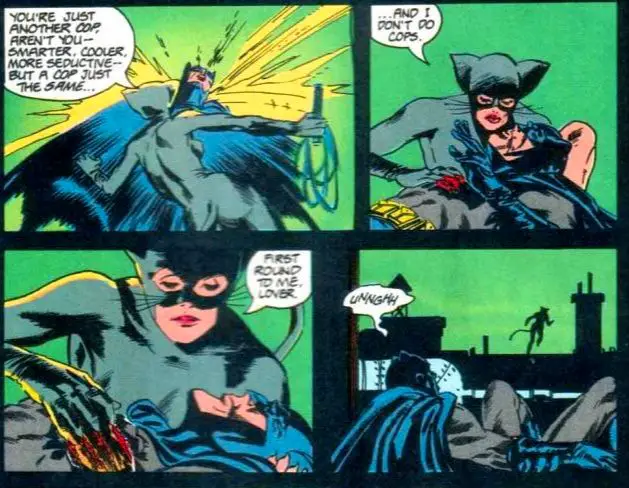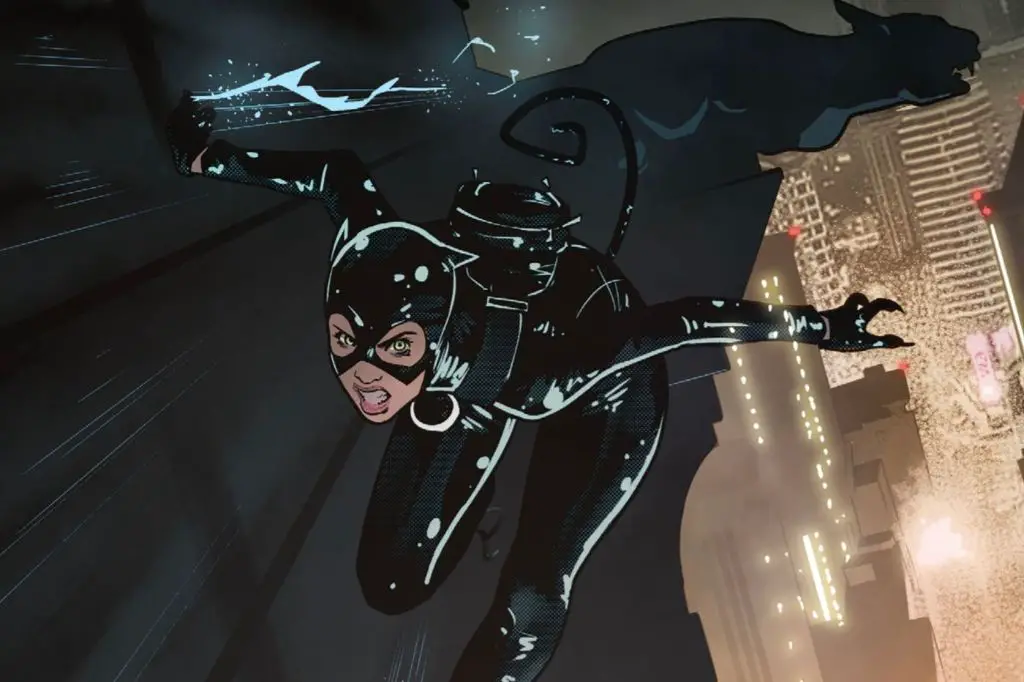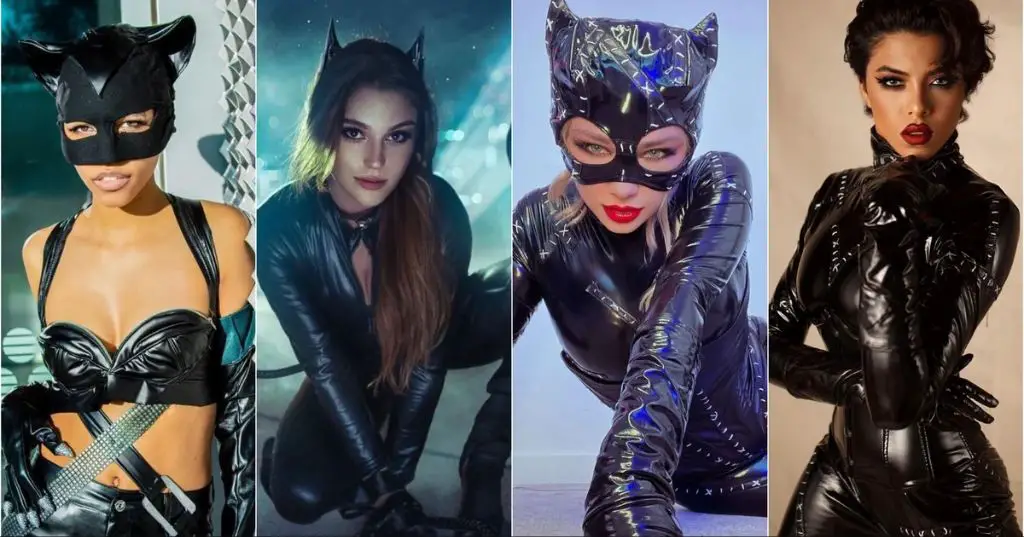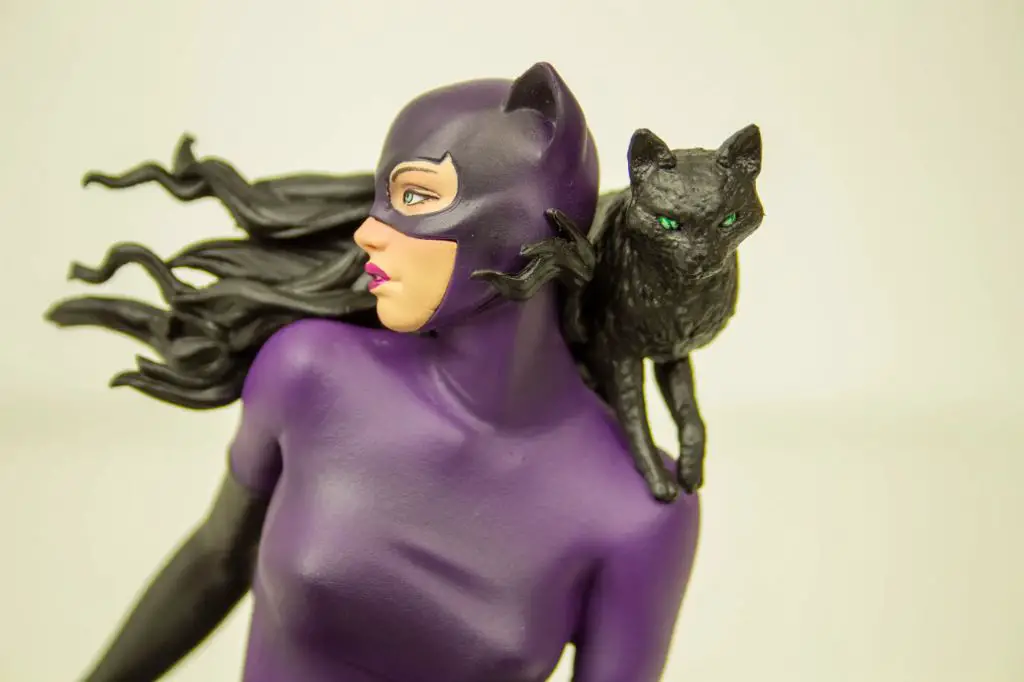Catwoman is one of the most iconic characters in comic book history. First introduced in Batman #1 in 1940, Catwoman has been a major presence in Gotham City for over 80 years. As her name implies, Catwoman has feline inspirations and is typically portrayed as a cat burglar wearing a tight black costume reminiscent of a cat suit, complete with cat ears on her cowl. She has a complex history with Batman, sometimes portrayed as a villain and romantic interest, and other times as an antihero. Catwoman represents independence, cunning, and moral ambiguity. She has been brought to life in numerous comic books, TV shows, films and other media over the decades. Her enduring popularity demonstrates her cultural impact as a fascinating and mysterious femme fatale.
Catwoman’s Origin Story
In Catwoman’s original comic book appearance in Batman #1 in 1940, she was known as “The Cat” and did not have a tail as part of her costume. She was introduced as a mysterious burglar and jewel thief whose identity was only revealed at the end of the story as a glamorous woman named Selina Kyle.
Catwoman was created by Bill Finger and Bob Kane as a femme fatale villain and love interest for Batman. Her original backstory portrayed her as a flight attendant who turned to crime after suffering a blow to the head during a plane crash she survived. She had expert skills in hand-to-hand combat and developed her Catwoman persona inspired by her cat called Hecate.

In these early appearances in the Golden Age of comics, Catwoman wore a green evening gown, purple cape and cat-eared cowl but did not have a cat-like tail as part of her outfit. It was not until later evolutions of her character that she adopted more feline-inspired elements like a tail, catsuit costume and cat-eye goggles.
When Did Catwoman First Get a Tail?
Catwoman did not originally have a tail when she first appeared in Batman comics in the 1940s. At that time, she went by the name “The Cat” and wore no costume, just a green evening dress (1). It wasn’t until her first comic book appearance in Batman #1 in 1940 that she took on the name Catwoman and donned a cat-themed costume. However, this original costume did not include a tail (1).
It wasn’t until the 1960s that Catwoman first appeared with a tail as part of her cat burglar costume. According to Screenrant, “When the ’60s Batman TV series debuted, Catwoman mirrored her comic appearance with a gray bodysuit, cat ears, claws, and a tail. This established the tail as a key part of her silhouette that’s remained ever since” (1).
So while Catwoman did not originally have a tail when she first appeared in 1940, it became a standard part of her iconic look starting in the 1960s Batman TV series. It’s now considered an essential part of capturing her cat-like appearance and agility.
(1) https://screenrant.com/catwoman-every-costume-selina-kyle-comics-batman-villain/
Catwoman’s Tail in Comics
Catwoman has had an iconic tail as part of her costume since her earliest comic book appearances. In her origin story in Batman #1 in 1940, Catwoman already had a cat tail attached to her costume as she committed crimes dressed like a cat burglar.
Some of Catwoman’s most famous comic book storylines have prominently featured her tail as part of her look. In the acclaimed Batman: Year One storyline in 1987, Catwoman’s tight black costume included a long, whip-like tail flowing behind her (https://www.reddit.com/r/DCcomics/comments/182a2lv/catwoman_costume_question_comic_excerpt_an/). Frank Miller’s gritty reimagining of Catwoman’s origins established the tail as an iconic part of her appearance.

In other storylines like The Long Halloween, Hush, and Batman: Dark Victory, Catwoman continued to be depicted with a tail attached to her black leather outfit. Whether drawn sleek and short or long and animated, the tail has remained a consistent part of Catwoman’s look in comics through the decades.
Catwoman’s Tail in Film and TV
Catwoman’s tail has made numerous appearances in her film and television adaptations over the years. In the 1960s Batman TV series starring Adam West, Eartha Kitt portrayed Catwoman with a tail attached to the back of her catsuit costume. According to Wikipedia, “For the series, Catwoman’s bodysuit was adorned with a cape and opera-length gloves”. The costume included a tail that stuck out from the back of the suit, emphasizing her cat-like persona. [1]
In 1992’s Batman Returns, Michelle Pfeiffer donned the famous catsuit complete with a stitched-on tail on the backside. Director Tim Burton wanted to emphasize the character’s animalistic nature, so the costume designers made sure to include an essential cat feature – the tail. Pfeiffer was able to use the tail effectively to showcase Catwoman’s unpredictable and mischievous attitude. [2]
Halle Berry starred in the 2004 stand-alone Catwoman film, where her suit initially did not have a tail. But as she gained more cat-like superpowers, cat ears and eventually a tail sprouted out. The tail appeared in action sequences to show the character embracing her feline agility and abilities. Costume designer Angus Strathie included the tail to highlight the “catsuit” concept from the comics. [2]
In The Dark Knight Rises (2012), Anne Hathaway’s Catwoman did not sport an actual tail. However, according to designer Lindy Hemming, the back of her suit had a cat tail-shape that emphasized her cat burglar tendencies. [1] The tail has been an important part of defining Catwoman’s identity across different movie and TV adaptations over the years.
The Symbolism of Catwoman’s Tail
Catwoman’s tail is an iconic part of her costume design that helps connect her animal motif as a cat burglar. While it doesn’t serve any practical purpose, the tail carries important symbolic meaning for the character.
First and foremost, the tail evokes Catwoman’s feline persona and ties her to actual cats. It’s a visual cue that reminds readers she has cat-like abilities and moves with stealth, flexibility and grace. Just as a tail is central to a cat’s balance and agility, Catwoman’s tail reminds us of her own cat-like skills.
The tail also underscores Catwoman’s mysterious, unpredictable and even dangerous nature, not unlike a cat. As Reddit user u/GothamKnight37 notes, “A tail has no purpose for a real life cat burglar. The purpose it serves Catwoman is it makes her look a bit like a cat, and that’s okay because it informs her character” [1]. It hints that there may be something slightly wild or untamed about her.
Additionally, her tail evokes notions of femininity and sensuality, highlighting Catwoman’s sexuality and flirtatious personality. It calls attention to her body and movement in an almost sultry way.
Ultimately the tail is an iconic part of Catwoman’s brand that visually encapsulates her cat burglar persona. It immediately evokes her key traits – stealth, unpredictability, sensuality – when fans see it as part of her costume design.
Fan Theories on the Tail
Catwoman’s tail has long been a source of discussion and debate among fans. On Reddit threads like this one, fans have pondered the meaning and implications of Catwoman having a tail.
Some fans view the tail as a purely aesthetic choice, meant to emphasize Catwoman’s cat burglar persona. As one Redditor pointed out, “A tail has no purpose for a real life cat burglar. The purpose it serves Catwoman is it makes her look a bit like a cat, and that’s okay because comic books.”

Other fans read deeper symbolism into the tail, seeing it as a representation of Catwoman’s fluid, unpredictable nature. On fan forums, there is much discussion over whether the tail should be seen as empowering or objectifying for the character.
There are also heated debates among fans over what type of tail best suits Catwoman – some argue for a real cat tail, while others prefer a fake tail attached to her costume. Some fans have even analyzed how the tail attaches to Catwoman’s costume as expressing different facets of her personality.
While interpretations may vary, it’s clear that the tail is an important part of Catwoman’s iconography for many fans. It represents her connection to felines and her stealthy, mysterious nature. The ongoing discussions show how invested fans are in analyzing even small details of her character design.
Catwoman Merchandise with a Tail
Catwoman’s iconic costume featuring a tail has inspired many products for fans over the years. Costume companies like Rubie’s (https://www.amazon.com/catwoman-tail/s?k=catwoman+tail) produce Catwoman outfits complete with a long, black faux fur tail as an essential part of capturing her look. These costumes allow fans to fully embody the character when dressed up for Halloween or cosplay events.
The tail has also been incorporated into Catwoman action figures and dolls, like the DC Comics Multiverse Catwoman figure by McFarlane Toys which includes a bendable tail accessory. Retailers offer a wide selection of Catwoman products featuring her classic tail, from t-shirts like Her Universe’s Catwoman design (https://www.heruniverse.com/product/dc-comics-the-batman-cat-woman-tail-t-shirt/18214257.html) to jewelry replicas of her iconic cat burglar goggles and tail.
For fans who want to show their love for Catwoman, having her signature tail incorporated into merchandise allows them to recognize the character while representing their fandom. The prevalence of Catwoman items with tail accessories demonstrates the important role it plays in her enduring pop culture image.
The Importance of the Tail to Catwoman’s Iconography
Catwoman’s tail has become an iconic part of her look over the years. When Selina Kyle made her first appearance in Batman #1 in 1940, she did not yet have her signature cat tail (source). It wasn’t until her character was revamped in the 1960s that artists started drawing Catwoman with a tail to emphasize her cat burglar persona. As Grazia magazine points out, “The cat o’ nine tails whip was the cherry on top of this Catwoman’s dominatrix-adjacent persona” (source).
The tail cemented Catwoman’s status as a cat-themed villain/antihero and helped visually distinguish her from other Batman characters. It also highlighted her flexibility, agility, and animalistic nature. Over the decades, the tail has become a staple of Catwoman’s various comic, television, film, and video game appearances. It is now considered an iconic part of her costume, just as essential as her cat ears and claws. For cosplayers and fans, a Catwoman costume would not be complete without the signature tail. It may not serve any practical purpose, but the tail is integral to Catwoman’s unique look and feline mystique.
The Importance of Catwoman’s Tail

In conclusion, Catwoman’s iconic tail is an integral part of her character and a core element of her identity and visual representation, though its specific origins are debatable. Her costume design and feline influences emphasize her animalistic nature and agility, while also symbolically representing her playfulness and sly cunning. Though details have varied across different comics and adaptations, the consistent presence of the tail solidifies Catwoman’s place alongside Batman and other classic characters with trademark visual flairs. While the tail itself may seem superficial, it is meaningful to fans and reinforces Catwoman’s standing as one of the most recognizable figures in popular culture.
Key points and takeaways:
- Catwoman first appeared with a tail in comics in the 1940s.
- The tail contributes to her cat burglar persona and ties into her catlike abilities.
- It visually distinguishes Catwoman from other characters.
- The tail has appeared in most major adaptations and become core to her image.
- Fans closely associate the tail with Catwoman’s identity.
- Though details vary, the tail’s presence across media cements its iconic status.
